|
The fleet of UAV need to "understand" the environment, and imaging sensors such
as cameras provide important information. The COMETS system will develop
coordinated perception tools, in order to use the redundancies that a group of
UAV presents ,such as gathering images from different points of view of the
same event.
The applications currently considered are terrain mapping, fire monitoring
and surveillance.
- Robust features extraction: blobs
Robust features extraction is an important previous step in many image
analysis applications. Homogeneity features are called blobs in scale-space
theory. In contrast to segmentation, blob detection has a more modest goal
-- we do not attempt to segment out exact shapes of objects, instead we want
to extract robust and repeatable features.
|
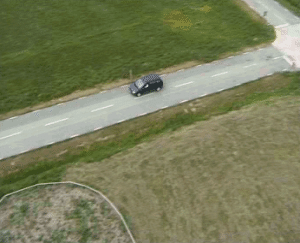

|
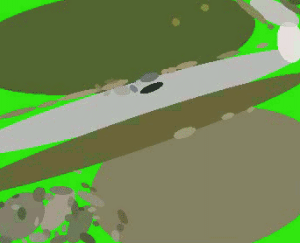

|
|
These blob features are very stable, and are useful for applications such
as wide baseline matching. The video shows the blob feature extraction
procedure over a sequence recorded from an helicopter.
|
Blob features have been used as texture descriptors and as features for image
database search. Blob features are also related to maximally stable extremal
regions (MSER), and to affinely invariant neighbourhoods. MSER features
are regions grown around an intensity extrema (max or min) and are used to
generate affine invariant frames, which are then used for view based object
recognition.
|


|
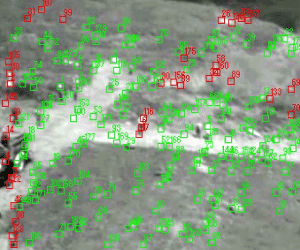

|
|
Spacio-temporal filtering techniques for motion estimation
are considered, and could be used for traffic monitoring, surveillance
activities and other.
|
Also, a feature matching based technique has been used for sequences of
images where the frame rate is very low. The video sequence shows how a set
of regions on the image plane is automatically selected and tracked over
the whole sequence.
|
- Fire segmentation
Techniques for fire segmentation in visual and infrared images have
been implemented. Processing and segmentation are applied to a sequence of
images received from the communications system every second.
Wavelet based techniques for optimal threshold selection in gray-scale
images have been used, and applied to the segmentation of fire in IR images.
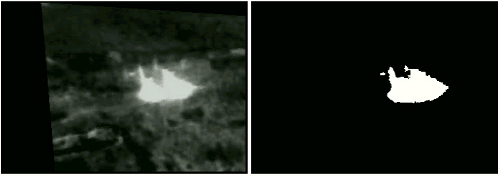
Infrared images compensation and fire segmentation.

In visual images, a colour histogram based segmentation procedure is used:
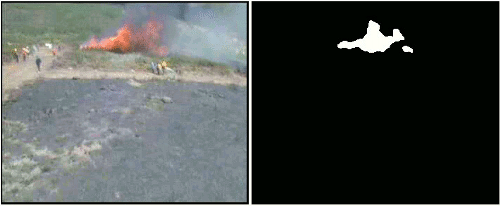
Visual images compensation and fire segmentation.

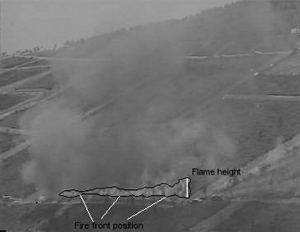
Fire characteristics extraction.
|
|
Once the compensation has been performed and the objects have been segmented
in the images, it is possible to obtain the measurements.
|

